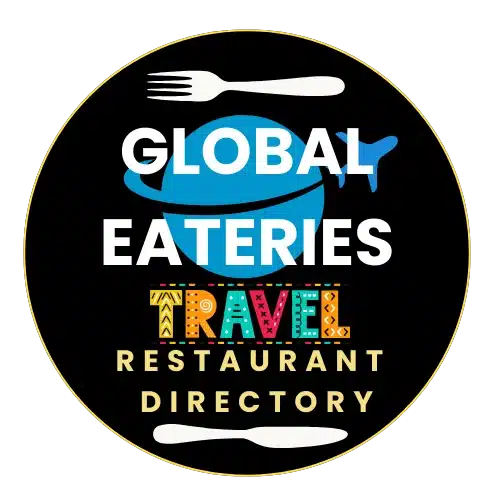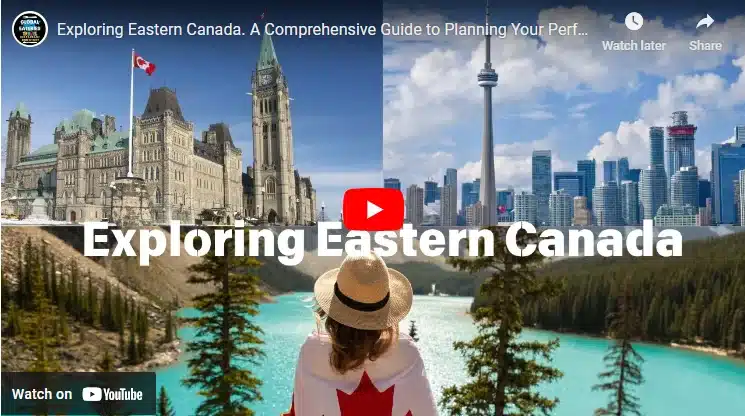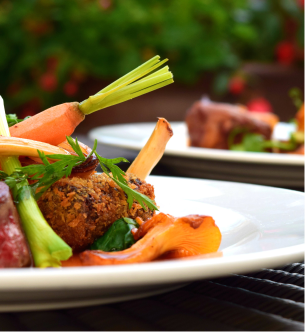Eastern Canada encompasses the provinces of Quebec, Ontario, New Brunswick, Nova Scotia, Prince Edward Island, and Newfoundland and Labrador. This region is known for its diverse cultural heritage, including strong French and British influences, and its varied landscapes, ranging from bustling urban centers to serene coastal towns and majestic national parks.
Explore Eastern Canada: Find 6 best cities to visit there
Explore Eastern Canada with our comprehensive guide. Discover top destinations, travel tips, cultural highlights, and outdoor adventures for planning your perfect trip.
Province of Quebec:
Montreal, Quebec
Montreal, the largest city in Quebec, is renowned for its vibrant arts scene, historic architecture, and multicultural atmosphere. Key attractions include:
- Old Montreal (Vieux-Montréal): Explore cobblestone streets, the stunning Notre-Dame Basilica, and the Old Port.
- Mount Royal Park (Parc du Mont-Royal): Enjoy panoramic views of the city from this urban green space.
- Montreal Museum of Fine Arts (Musée des beaux-arts de Montréal): Discover extensive collections of art from around the world.
Quebec City, Quebec
Quebec City, a UNESCO World Heritage Site, offers a glimpse into the past with its well-preserved colonial architecture and fortified city walls. Highlights include:
- Old Quebec (Vieux-Québec): Wander through charming streets, visit the iconic Château Frontenac, and explore historic sites like the Citadel.
- Montmorency Falls (Chute-Montmorency): Just outside the city, these impressive falls are higher than Niagara Falls and offer stunning views.
Although Montreal and Quebec city has their own distinctive features, many visitors still like a comparison between Montreal vs Quebec city. Both cities are most prominent in the Canadian province of Quebec, each offering a distinct experience shaped by their unique histories, cultures, and settings. Both cities offer rich experiences and are relatively close to each other (about 3 hours by car), so visitors to Quebec often find it worthwhile to explore both to appreciate their distinct flavors.
People in both cities speak the same language. However, Montreal is more bilingual (English and French), whereas Quebec City is predominantly French-speaking. As for the size, Montreal is larger, more cosmopolitan, and faster-paced, while Quebec City has a smaller, more intimate feel with a focus on preserving its historic character. When it comes to cultural scene, Montreal is more diverse and includes a wider range of international influences, whereas Quebec City’s cultural offerings are often centered around its historical and French heritage.
What are the best ways to travel from Montreal to Quebec city?
There are several ways to travel from Montreal to Quebec City, each offering its own advantages depending on your preferences for comfort, convenience, and cost:
Four main ways people like to travel are by air, by train or take go by driving with their personal car or rent a car. People also use a share ride. If you prefer driving then the journey takes about 2.5 to 3 hours depending on traffic and the route chosen (via Autoroute 20 or Autoroute 40). Rental cars are available at Montreal-Trudeau Airport and throughout Montreal. Air travel is less popular due to the short distance. Train travel is quite popular as the cost is reasonable and affordable.
If you prefer to take a train from Montreal to Quebec city, VIA Rail Canada offers train services between Montreal’s Gare Centrale and Quebec City’s Gare du Palais. Trains are comfortable and provide scenic views along the St. Lawrence River. The travel time is about 3 hours, making it a convenient option for those preferring to relax and enjoy the journey.
Province of Ontario:
Toronto, Ontario
Toronto, Canada’s largest city, is a dynamic metropolis known for its diverse neighborhoods, cultural landmarks, and bustling waterfront. Toronto is one of the most multicultural cities in the world, with over half of its population born outside of Canada. This diversity is reflected in its neighborhoods, cuisine, festivals, and cultural events.
If you visit downtown Toronto, then this city is famous as the Toronto skyline is iconic with modern skyscrapers and historic architecture set against the backdrop of Lake Ontario.
- CN Tower: Experience breathtaking views from one of the world’s tallest observation towers.
- Royal Ontario Museum (ROM): Explore natural history and world cultures through extensive exhibits.
- Distillery District: Enjoy boutique shopping, dining, and entertainment in this historic area.
If you are a sports enthusiast then Toronto is a sports hub with popular teams like the Toronto Maple Leafs (NHL), Toronto Raptors (NBA), Toronto Blue Jays (MLB), and Toronto FC (MLS).
If you enjoy dining and visit downtown Toronto, you will find a variety of cuisine from restaurants all around the world. The Metro Toronto Convention Centre (MTCC) is also a prominent venue in downtown Toronto, known for hosting a wide range of events, conferences, and exhibitions.
If you are an international visitor or a local traveler and planning to stay in Toronto for few days then you will find some of the best hotels in Toronto Canada as the city offers a diverse range of hotels catering to different preferences and budgets. Some of the best hotels in Toronto known for their luxury, comfort, and amenities include, Four Seasons Hotel Toronto, a five star located in the heart of Yorkville. If you prefer to stay near the CN Tower, then The Ritz-Carlton Toronto is a famous 5 star hotel.
Other hotels include Shangri-La Hotel Toronto with a Michelin-starred restaurant. You will also find The Bisha Hotel Toronto near the CN tower. Cambridge Suites Toronto in downtown is known for its comfortable accommodations, convenient location, and friendly service. Radisson Blu Hotel at Toronto Pearson International Airport, which is convenient for travelers needing accommodations near the airport.
Ottawa, Ontario
Ottawa, Ontario’s capital city, is a vibrant and culturally rich destination known for its historic landmarks, government institutions, and beautiful natural surroundings. Ottawa’s unique blend of history, culture, and natural beauty makes it a fascinating destination for tourists, history buffs, and outdoor enthusiasts alike. There are many things to do in Ottawa Canada.
Ottawa is home to national institutions and historic sites. Key attractions include:
- Parliament Hill: Tour the iconic buildings and witness the Changing of the Guard ceremony.
- National Gallery of Canada: Admire an impressive collection of Canadian and Indigenous art.
- Rideau Canal: Visit in winter for ice skating or in summer for boating along this UNESCO World Heritage Site.
Province of Nova Scotia:
Halifax, Nova Scotia
Halifax is a vibrant coastal city with a rich maritime history. Highlights include:
- Halifax Citadel National Historic Site: Explore the historic fort overlooking the city.
- Maritime Museum of the Atlantic: Learn about Nova Scotia’s nautical heritage, including exhibits on the Titanic.
- Peggy’s Cove: Visit this iconic lighthouse and picturesque fishing village just outside Halifax.
Prince Edward Island
Prince Edward Island (PEI) is known for its stunning landscapes, charming towns, and literary heritage. Key attractions include:
- Green Gables Heritage Place: Visit the setting of L.M. Montgomery’s beloved “Anne of Green Gables” series.
- Prince Edward Island National Park: Explore beautiful beaches, dunes, and hiking trails.
- Charlottetown: Discover the birthplace of Confederation and enjoy the city’s historic charm.
Best Time to Visit Eastern Canada
Eastern Canada experiences four distinct seasons, each offering unique experiences for travelers:
- Spring (March to May): Ideal for avoiding crowds and enjoying blooming flowers.
- Summer (June to August): The peak tourist season, perfect for outdoor activities and festivals.
- Fall (September to November): Enjoy colorful foliage and harvest festivals.
- Winter (December to February): Great for winter sports and holiday festivities, though some attractions may be closed.
Travel Tips for Eastern Canada
- Language: While English is widely spoken, French is the predominant language in Quebec. Learning basic French phrases can enhance your experience.
- Currency: The Canadian dollar (CAD) is the official currency. Credit cards are widely accepted, but it’s good to have some cash for smaller establishments.
- Transportation: Eastern Canada has an extensive network of trains, buses, and flights. Renting a car can be a convenient way to explore more remote areas.
- Accommodation: From luxury hotels to cozy bed-and-breakfasts, there are accommodations to suit every budget. Booking in advance is recommended during peak seasons.
Cultural and Historical Highlights
Eastern Canada is rich in cultural and historical landmarks:
- The Canadian Museum of History (Gatineau, Quebec): Explore Canada’s past through engaging exhibits.
- The Fortress of Louisbourg (Cape Breton Island, Nova Scotia): Step back in time at this reconstructed 18th-century fortress.
- Confederation Centre of the Arts (Charlottetown, PEI): Enjoy performances and exhibits celebrating Canadian culture.
Outdoor Adventures in Eastern Canada
For nature lovers and adventure seekers, Eastern Canada offers a plethora of outdoor activities:
- Hiking: Explore trails in national parks such as Gros Morne (Newfoundland) and Fundy (New Brunswick).
- Whale Watching: Head to the Bay of Fundy or the Gulf of St. Lawrence for spectacular whale watching opportunities.
- Kayaking and Canoeing: Paddle along scenic waterways, including the Thousand Islands (Ontario) and the Saguenay Fjord (Quebec).
Practical Information for Travelers
- Visas and Entry Requirements: Check visa requirements for your country. U.S. citizens typically do not need a visa for short visits.
- Health and Safety: Canada is a safe destination with high-quality healthcare. Travel insurance is recommended.
- Climate and Clothing: Pack for the season and be prepared for variable weather, especially if you’re visiting multiple provinces.
FAQs
What is the best way to travel around Eastern Canada?
The best way to travel around Eastern Canada depends on your itinerary and preferences. Major cities are well-connected by trains, buses, and flights. Renting a car is recommended for exploring rural areas and national parks.
Is it necessary to speak French in Quebec?
While it’s not necessary to speak French, knowing some basic phrases can be helpful and appreciated. Most people in the tourist industry speak English.
What are some must-try foods in Eastern Canada?
Don’t miss trying poutine in Quebec, seafood (especially lobster) in the Maritimes, and butter tarts in Ontario.
How long should I plan for a trip to Eastern Canada?
A trip of 2-3 weeks allows you to explore the major highlights at a relaxed pace. However, even a shorter trip can be rewarding with careful planning.
Are there any travel restrictions in Eastern Canada?
Travel restrictions can vary. It’s essential to check the latest guidelines and requirements, especially in light of potential health advisories.






